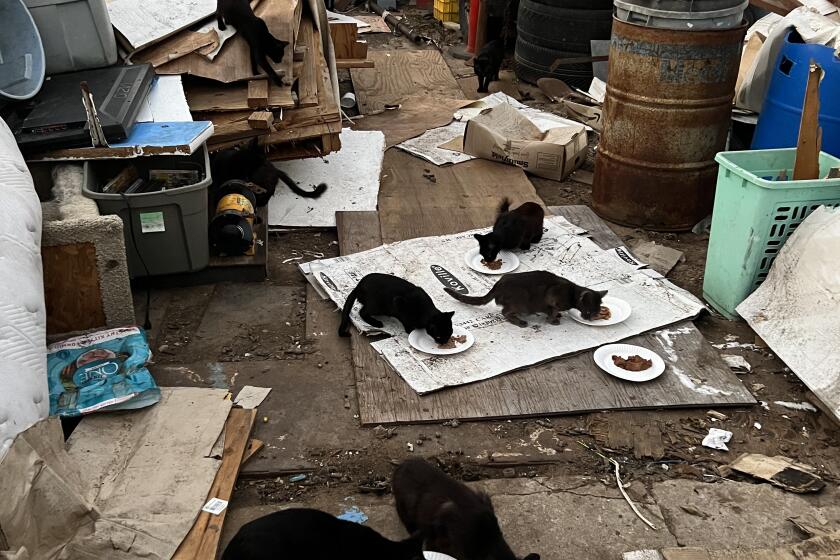Hansen: Sacred and profane: Laguna Beach
It’s no real secret that the culture of Laguna Beach is alluring and mysterious. People use words like “special,” “charming” or “weird.”
Dozens of words, thousands of stories, millions of memories made. And now, two more books have been published that try to describe the village of Laguna.
Like two sides of a coin, “Loving Laguna” by historian Skip Hellewell, and “It Takes a Villager” by writer and longtime resident Arnold Hano show different sides of the city.
You have to read these two small books together because they really are complementary. Hellewell’s guide is geared toward the tourist or local who wants to understand both the history and practical aspects of Laguna.
By contrast, Hano’s book is a collection of his local columns that go back to the 1960s.
The two are very much like the sacred and the profane of Laguna Beach history.
That’s not a slam. It just is. Without one, there isn’t the other. Both are great additions to Laguna lore.
Hellewell plays the straight man to Hano’s color — and boy is there color.
In a column dated Oct. 17, 1963, Hano, now 91, a proud Democrat and civil rights activist, was shocked by the treatment of a Laguna Beach African American, who tried to get a haircut in town but was refused. Using language appropriate for the time, Hano eventually worked to help change the policies and behavior.
“Two weeks ago a Negro boy who resides in Laguna and attends Orange Coast College walked into a barbershop in the downtown area and was told by a barber: ‘I don’t know how to cut your hair.’ The boy walked out,” Hano wrote. “There is not a court in the state that will tolerate this shallow pretext, and it is only the patience and tolerance of Negroes in this town that have kept these barbers and others from being hauled before the law.”
Hano’s poignant vignettes highlight not only the politics of the time but also the longer-term ramifications. For example, Hano first wrote about putting power lines underground in 1961 — an issue that is still ongoing more than 50 years later.
Hellewell, meanwhile, did extensive research using the Historical Society, of which he is a member, and gave a distilled account regarding every corner of Laguna. The brief chapters give interesting tidbits on everything from historical buildings to the role of artists and “Laguna characters.”
“I wanted to tell the stories that make Laguna unique,” Hellewell said in an interview. “The closer you look, the more you see.”
Both books are available through Laguna Beach Books or Amazon.com. Hellewell’s is also at some area stores, including Tuvalu and Laguna Beach Drugs.
Hellewell’s historical heritage is evident as he retells some of the fascinating stories that speckle Laguna’s past, such as “Laguna Woman,” the famous skull found on St. Anns St. in the 1930s.
More than 17,000 years old, the skull was considered the oldest human remains ever found in the Western Hemisphere. In later years, there was some debate about the “oldest” label among archaeologists.
Either way, Laguna Beach has been popular for a very long time.
“It’s the charm of these beaches,” Hellewell said. “It’s shaped the culture of this town and made it unique.”
And that uniqueness is worth fighting for, says Hano. If there is a theme to Hano’s many columns, it’s his unbridled love and pride of Laguna’s village characteristics: small, sustaining, natural, egalitarian, real.
If anyone or anything tries to mess with that magic formula, stand back. He was asked in 1961 to describe Laguna’s “charm,” and gave a lengthy, stream-of-consciousness list. Here is a sample:
“The smell of eucalyptus nuts … standing near the top of Bluebird Canyon when the rest of the town is foggy … houses that are all colors, all sizes (mostly little), all shapes (most cockeyed), on streets without sidewalks …the sounds on Friday night when Laguna scores a rare touchdown … the old man who eats his lunch on a bench outside the library.”
We still see these things, and the old man is still there.
In his later columns, such as this one in October 2005, Hano brings a voice to saving “Village Laguna.”
“We in Village Laguna are the voice of everyman, everywoman. We refuse to be silent in the face of a bulldozing progress. We cherish what has gone before us. It is worth saving.”
Always somewhat bombastic, Hano’s columns clearly reveal his passions yet they can also be very personal and touching, such as when he described the death of his big brother during World War II.
“So it went. Depression and war and marriage and kids and death. And I live on. I wonder why. I wonder how. I keep thinking that each column will be my last. But … next is life. Next is continuing. Next is gently putting aside regret. Next is placing my hand on my wife’s sweet back each night.”
Next is the people of Laguna, showcased in two special books.
And after that, it’s up to you.
DAVID HANSEN is a writer and Laguna Beach resident. He can be reached at davidhansen@yahoo.com.
All the latest on Orange County from Orange County.
Get our free TimesOC newsletter.
You may occasionally receive promotional content from the Daily Pilot.



